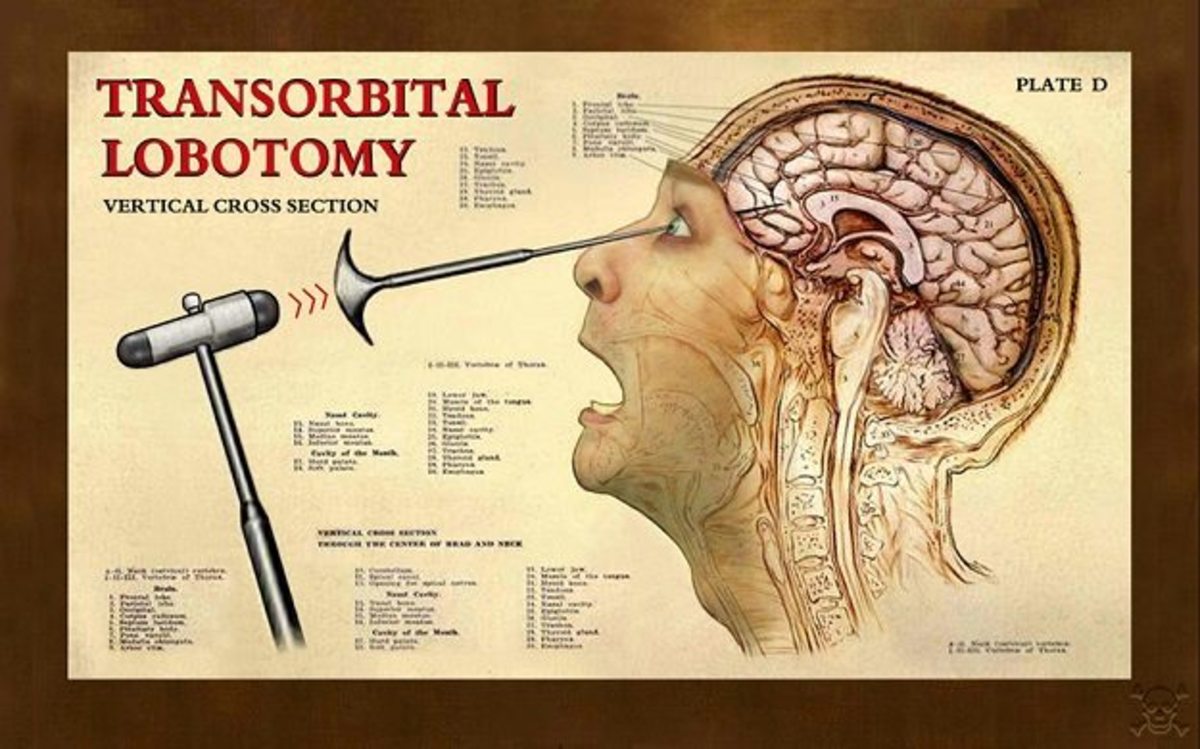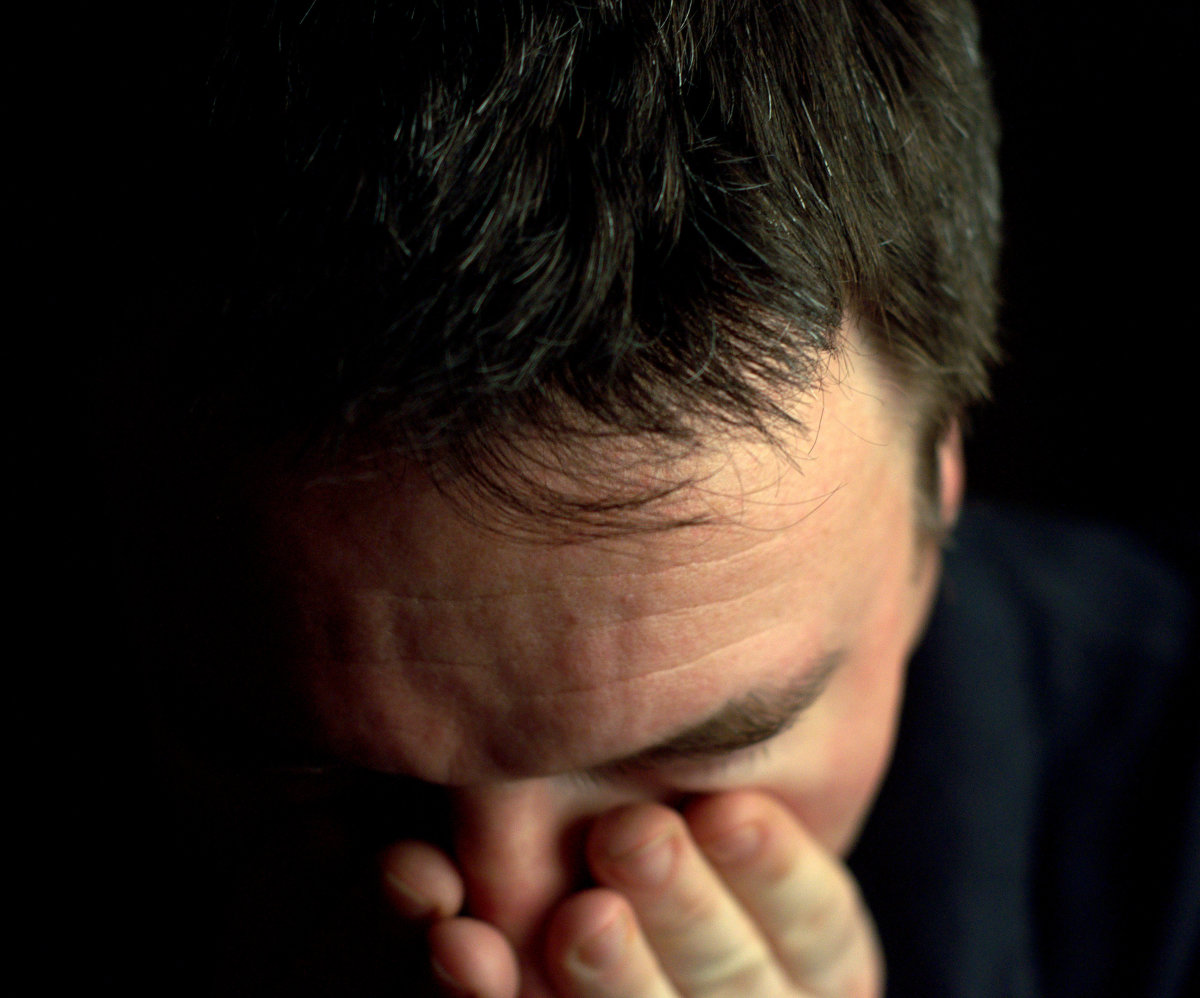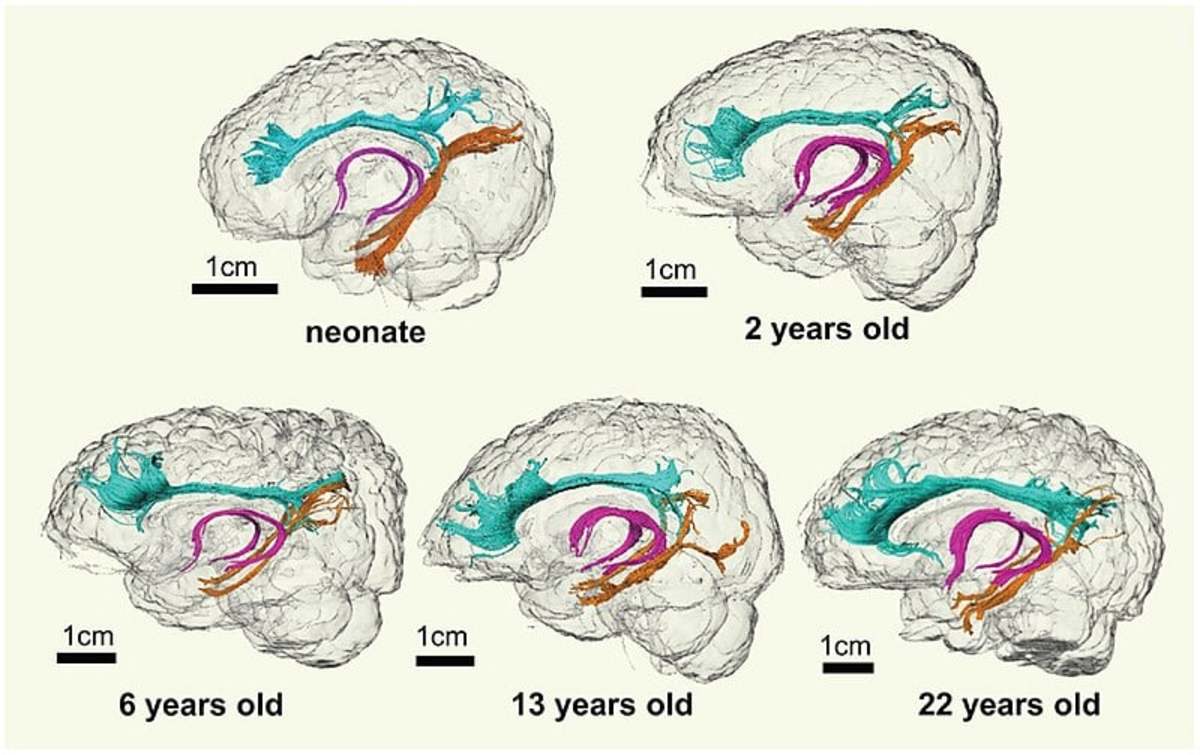What is a Frontal Lobotomy?

We've all heard of a frontal lobotomy.
We may even all have heard of some of the jokes surrounding a frontal lobotomy, like
I'd rather have a bottle in front of me, than a frontal lobotomy.
Gotta love the old ones; they're the best!
A frontal lobotomy, however, was very real, very barbaric, and what's more, it didn't work.
Way back in the olden days, in 1935 to be exact, a Portugese neurologist by the name of Egas Moniz, became fixated with the idea that fixed circuits in the brain were responsible for causing obsessive behaviour in some patients.
Don't forget the whole field of psychiatry was in its infancy then, so if any 'expert' in the field could think up a breakthrough, the world was ready for it.
We had at that time, wards or hospitals full of mad people - they called them sanatoriums. Without the modern day psychiatric calming drugs, we had people tied to beds, tied in strait-jackets, just to protect not only themselves but those around them.
You never see the likes of this today. Perhaps there are less mad people nowadays, who knows?
Egas Monez had the idea that somehow shortcutting the brain circuits could cure madness.
With a crude instrument that had two prongs, he inserted the prongs through a patient's forehead, waved the prongs around inside, supposedly to cut signals from the front of the brain to the rear, and was delighted to note his patient make a full recovery, without any obvious side-effects.
The frontal lobotomy was born.

Egas Moniz called his operation a "Frontal Leucotomy".
His first 20 patients showed a remarkable improvement in their mental conditions, and Egas Moniz proudly published his findings in the medical journals of the day.
A certain Walter Freeman, an American neurologist, seized upon those findings and set about developing his own strategy for carrying out frontal leucotomies, which he called "frontal lobotomies".
Freeman carried out the first frontal lobotomy in the US in 1936, and from there, many countries throughout the world starting doing them.
Nine years after Walter Freeman started carrying out frontal lobotomies, he heard of an an Italian doctor, Amarro Fiamberti , who had developed a new technique. By placing metal picks into the corner of someone's eyes, he could operate on patients' brains, sweeping the pick back and forth to sever any connection between the frontal and rear parts of the brain.
This became known as the "Icepick" frontal lobotomy.
Walter Freeman became something of an evangelist for frontal lobotomies after this, travelling the length and breadth of the US carrying them out wherever he could.
He did not have a surgeon's licence, and this new techniques allowe him to carry out many more operations than he could previously.
Walter Freeman really believed he was helping people. According to his own statistics:
- 63% were improved
- 23% unchanged
- 14% were worse off
His last frontal lobotomy was carried out in 1967, and his licence was revoked shortly afterwards.
Meanwhile in the rest of the world, the UK have the unenviable record of carrying our more frontal lobotomies per head than any other nation.
Most of the lobotomists themselves did not carry out any follow-up on their patients, content as they were to receive a handshake and a thanks from the patient immediately after surgery.
But other psychiatrists did, and the immediate results seemed to be:
- 33% better off
- 33% unaffected
- 33% worse off
Those results were not exactly what the psychiatrists wanted to see. The failure rate was too high.
Over the years, it became even more apparent that the damage done to frontal lobotomy patients sometimes took more than a year to show.
Those that had walked from the surgery immediately afterwards, were drooling wrecks a year down the line.
The peak year for frontal lobotomies being carried out was probably 1949, which was the year Egas Moniz was awarded the Nobel Prize for inventing them.
After that, they fell out of fashion, partly due to the invention of effective psychiatric drugs by the mid-1950s, before being finally outlawed around the early 1970s.
Today, there are many severely brain-damaged people still around, suffering from the results of being given a frontal lobotomy all those years ago.
Most of them are little more than cabbages, barely able to talk and with limited brain function.
Not all were severely mentally ill.
Some were given a frontal lobotomy for having postnatal depression, or a child out of wedlock.
For this, their lives were irreversibly ruined.
I was a nurse back in the 1970s, and had to work for several weeks on psychiatric units as part of my training.
I could not understand why we had patients that had been resident, and therefore completely institutionalized, for 30 or 40 years, especially when they had not been insane to being with.
They were originally admitted for having a child out of wedlock, or for having a mild depression, but no-one could or would tell me why they were still there, and why were they acting like zombies in the way they walked and talked?
I assumed it was the powerful combination of drugs they had been prescribed. They couldn't even sit outside on a sunny day, because part of the side-effects of their medication meant an increased sensitivity to the sun.
Now I know.
They were all lobotomized.
This is a shame many states and countries live with today, by hiding those damaged people away.
There but for the grace of God go any of us.










